
- INDEX
Fractional CO2 laser therapy is an innovative technology drawing attention in the field of cosmetic medicine. With fewer adverse effects than conventional laser therapy, it is highly effective in improving photoaging of the skin, scarring, and keloids. This article will provide a detailed overview of fractional CO2 laser Edge ONE treatment, its principles, parameter settings, treatment effects, and follow-up for a better understanding. It is full of practical information for aesthetic medicine professionals and physicians.
Overview of Treatment with Fractional Co2 Laser (00:10-)
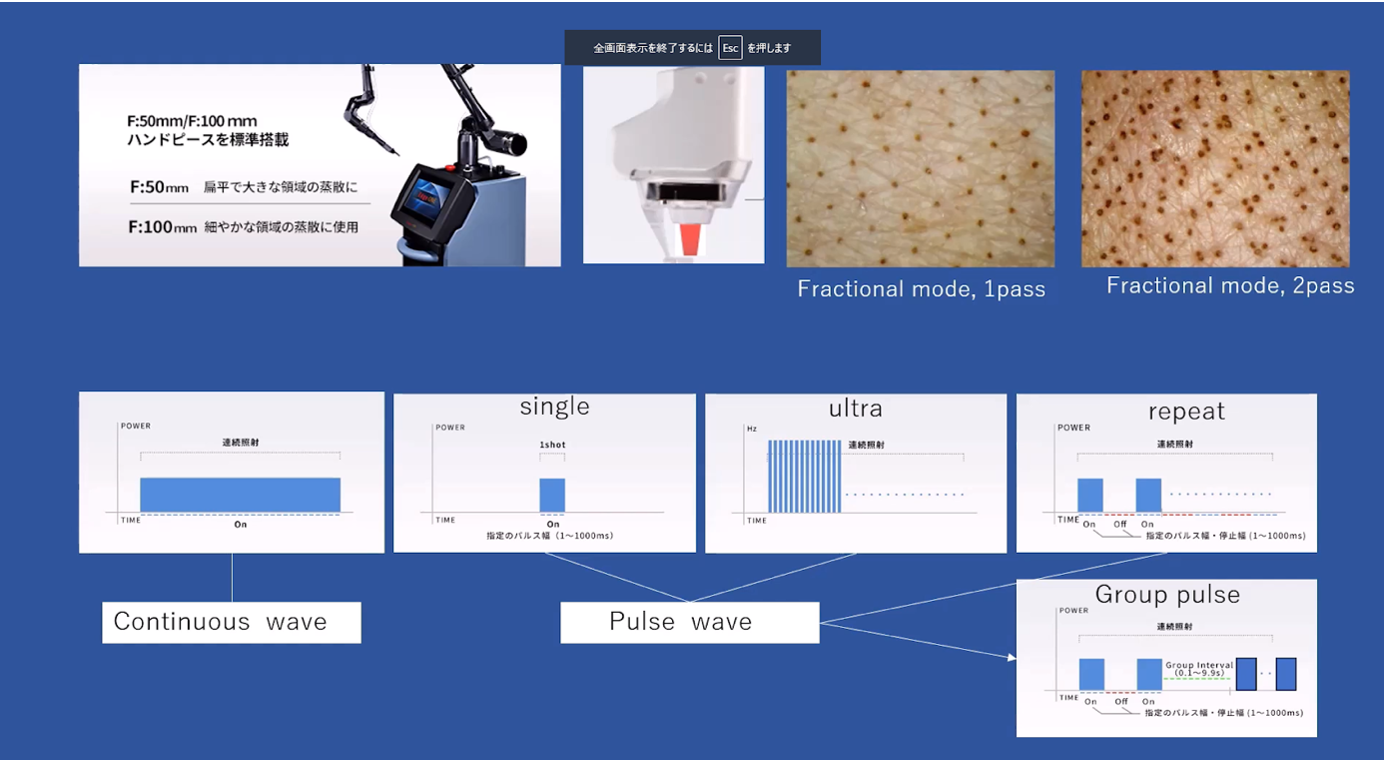
Fractional CO2 laser is a new, highly effective technology for skin rejuvenation and scar treatment. It has fewer adverse effects and a shorter recovery time than conventional laser treatments. The fractional CO2 laser delivers a microscopic laser beam to the skin, creating a tiny zone of cauterization while protecting the surrounding healthy tissue. This promotes the skin’s natural regeneration process and stimulates the production of new collagen. The result is a wide range of cosmetic benefits, including wrinkle reduction, improved skin texture, and reduced scarring.
Principles of Fractional Co2 Laser (2:29-)
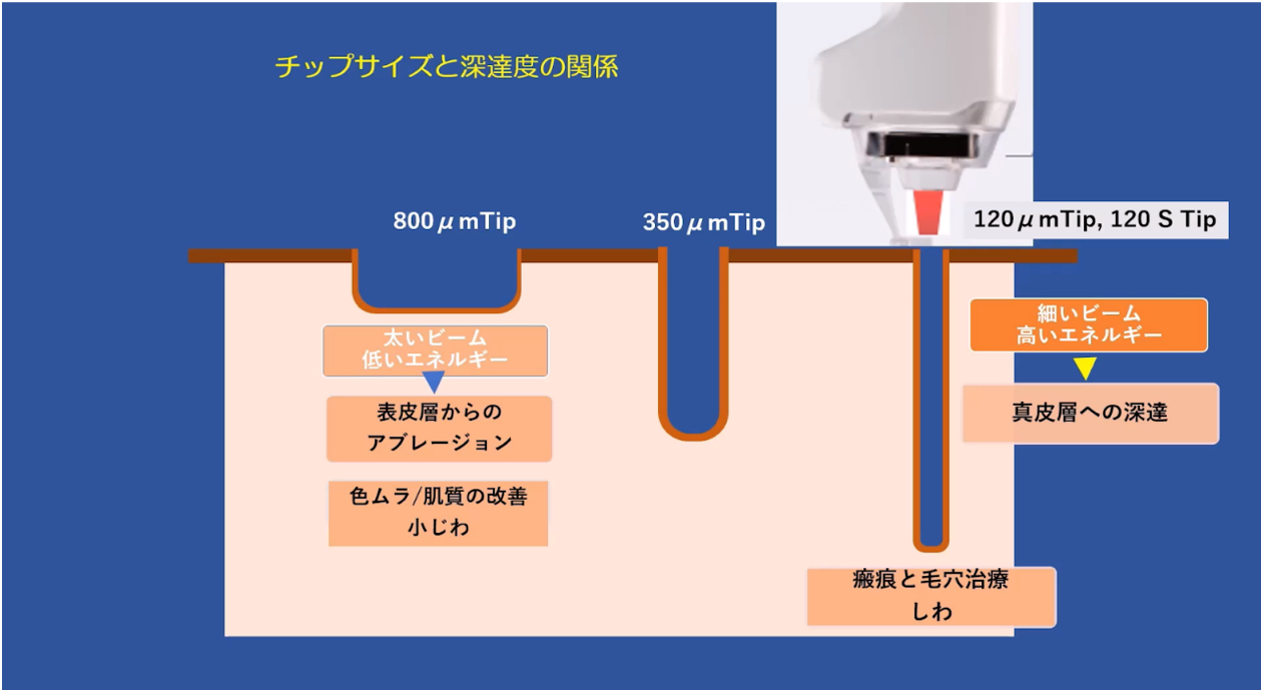
The fractional CO2 laser makes microscopic holes in the skin at the site of irradiation. Accordingly old skin cells are removed and the regeneration of new skin cells is promoted. Since laser light is easily absorbed by moisture, it targets the moisture in the skin and releases thermal energy.
This thermal energy works within the skin, stimulating collagen production and improving skin elasticity and firmness. In addition, because the laser irradiation area is microscopic and limited, there is less impact on the surrounding healthy tissue compared to conventional laser therapy. This results in less downtime after treatment and less burden on the patient.
Parameters of Fractional Co2 Laser Treatment (4:35-)
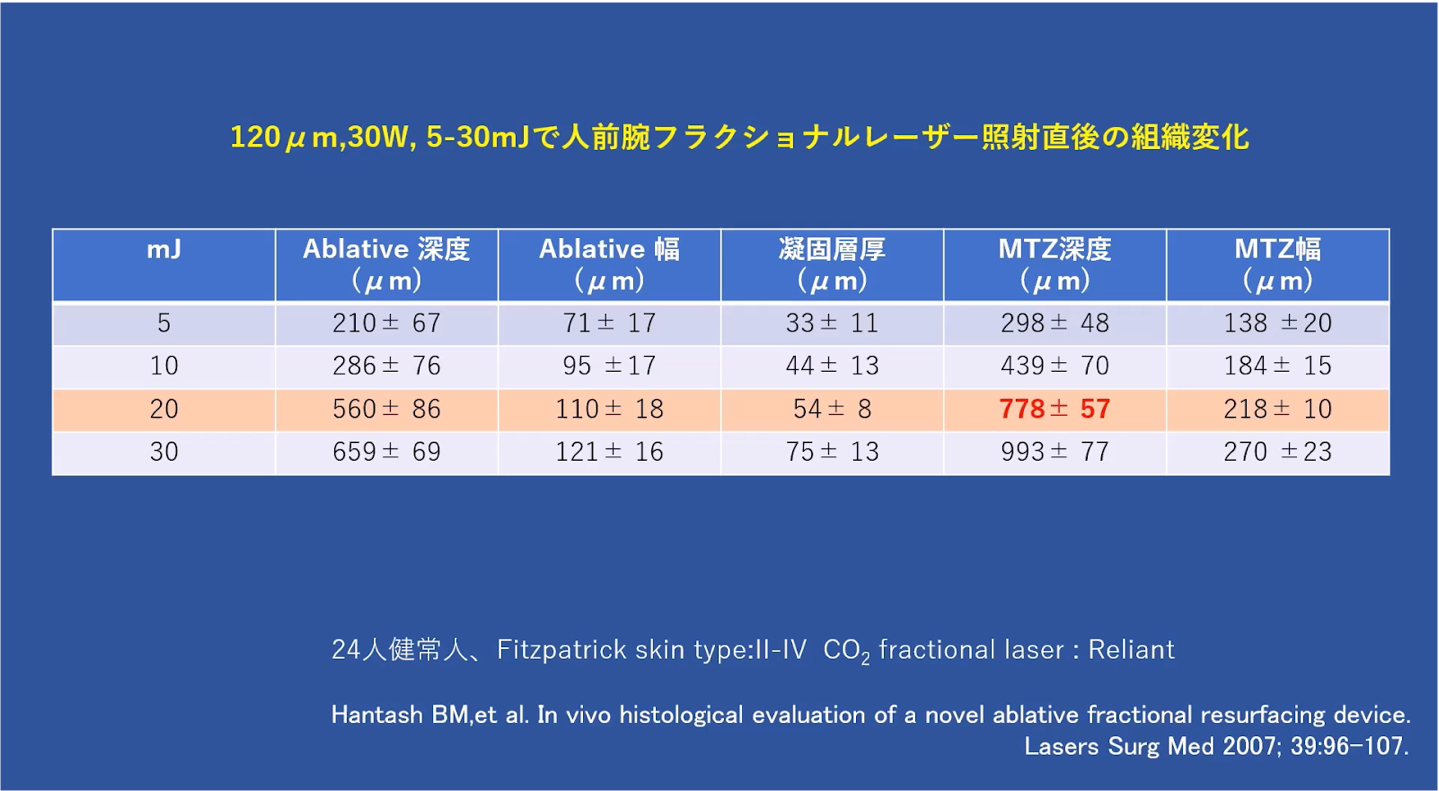
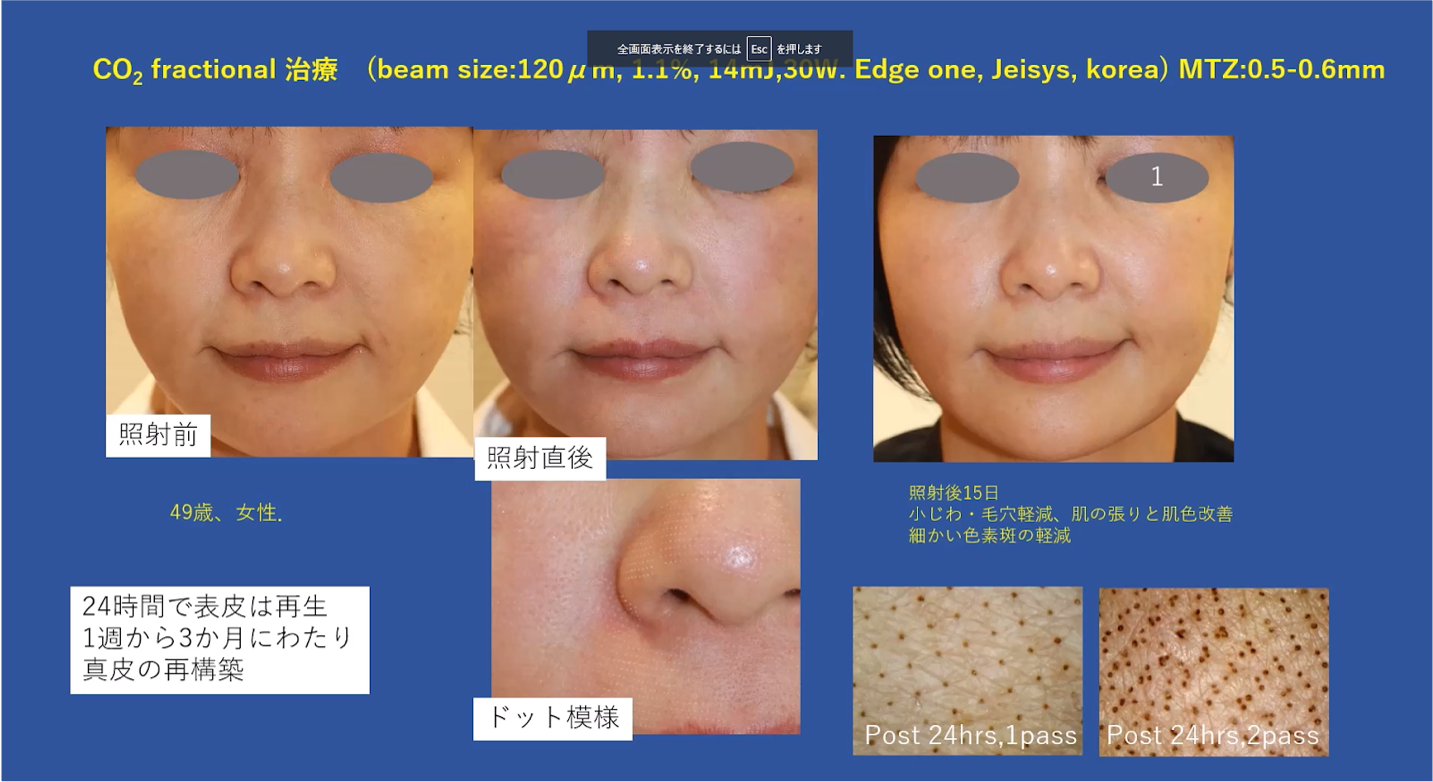
Parameter settings for fractional CO2 laser therapy, such as wavelength, energy density, and irradiation depth, have a significant impact on treatment efficacy. CO2 laser is a 10,600nm wavelength with a very high water absorption rate, enabling effective treatment from the epidermis to the deeper layers of the skin. Proper setting of energy density is necessary to adjust treatment depth and effect.
Typically, higher energy density is required for scar treatment, while lower density is used for skin texture and wrinkle treatment. Irradiation depth is adjusted according to the treatment area and purposes. Deep irradiation is required, for example, for deep wrinkles and scars, while shallower is sufficient for improving superficial wrinkles and skin texture. Setting the optimal parameters according to the patient’s symptoms and skin type is the key to effective treatment.
Effects and Follow-up of Fractional Co2 Laser Treatment (10:30 – )
Effects of fractional CO2 laser treatment appear over several weeks to several months after treatment. Mild redness and swelling may be seen right after treatment, but usually subsides within a few days. Subsequently, the skin’s regenerative process proceeds, producing new collagen and improving skin texture, wrinkles, and scarring.
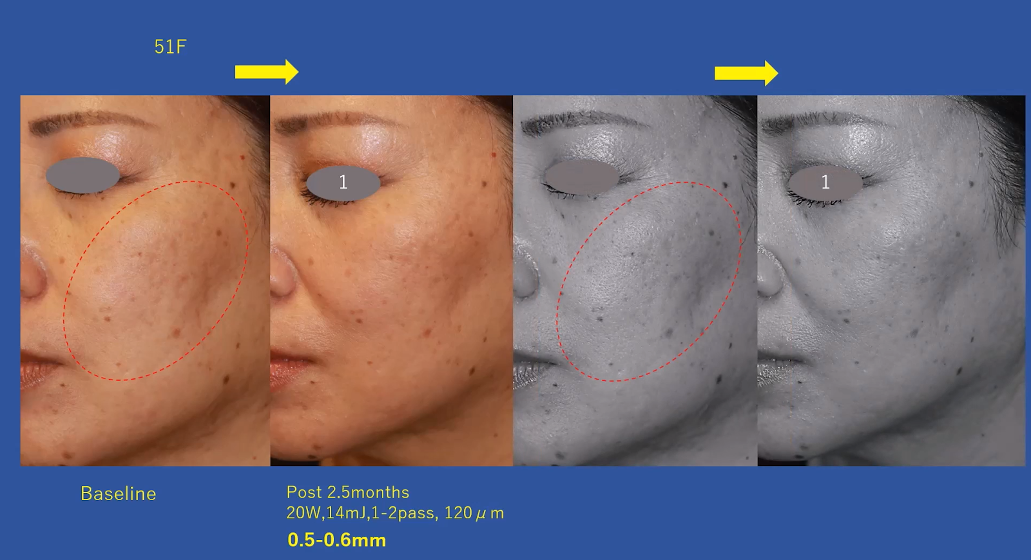
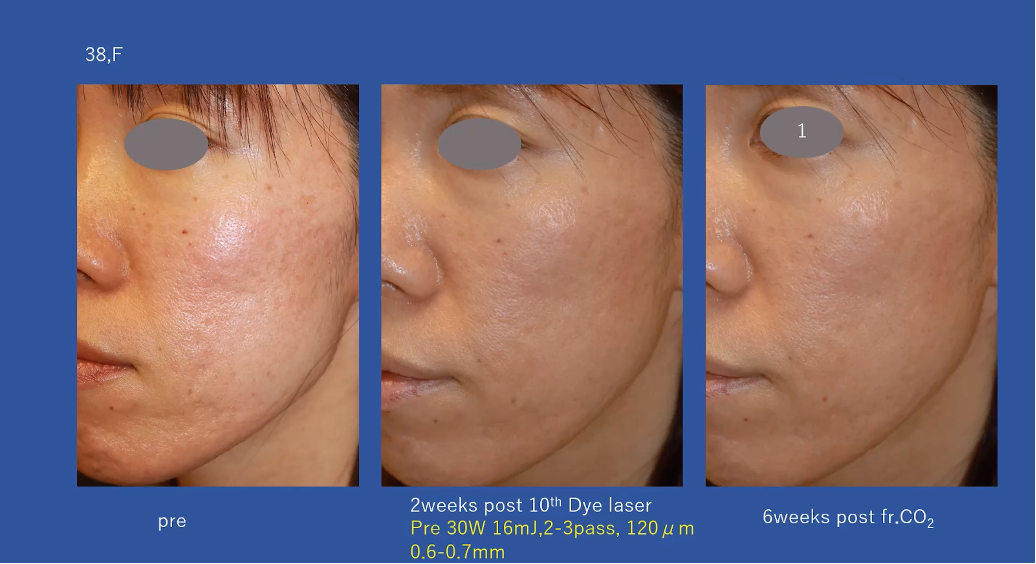
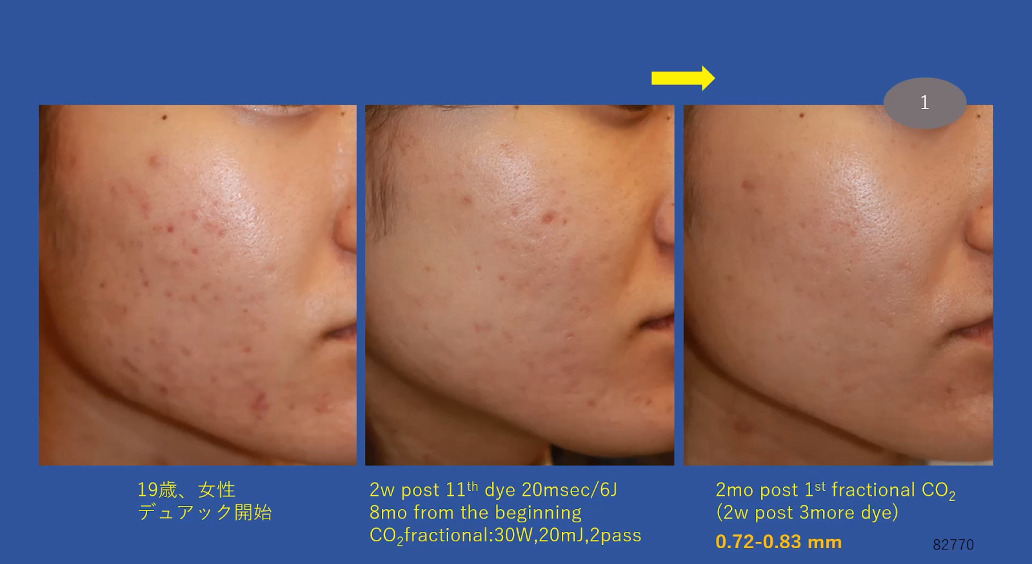
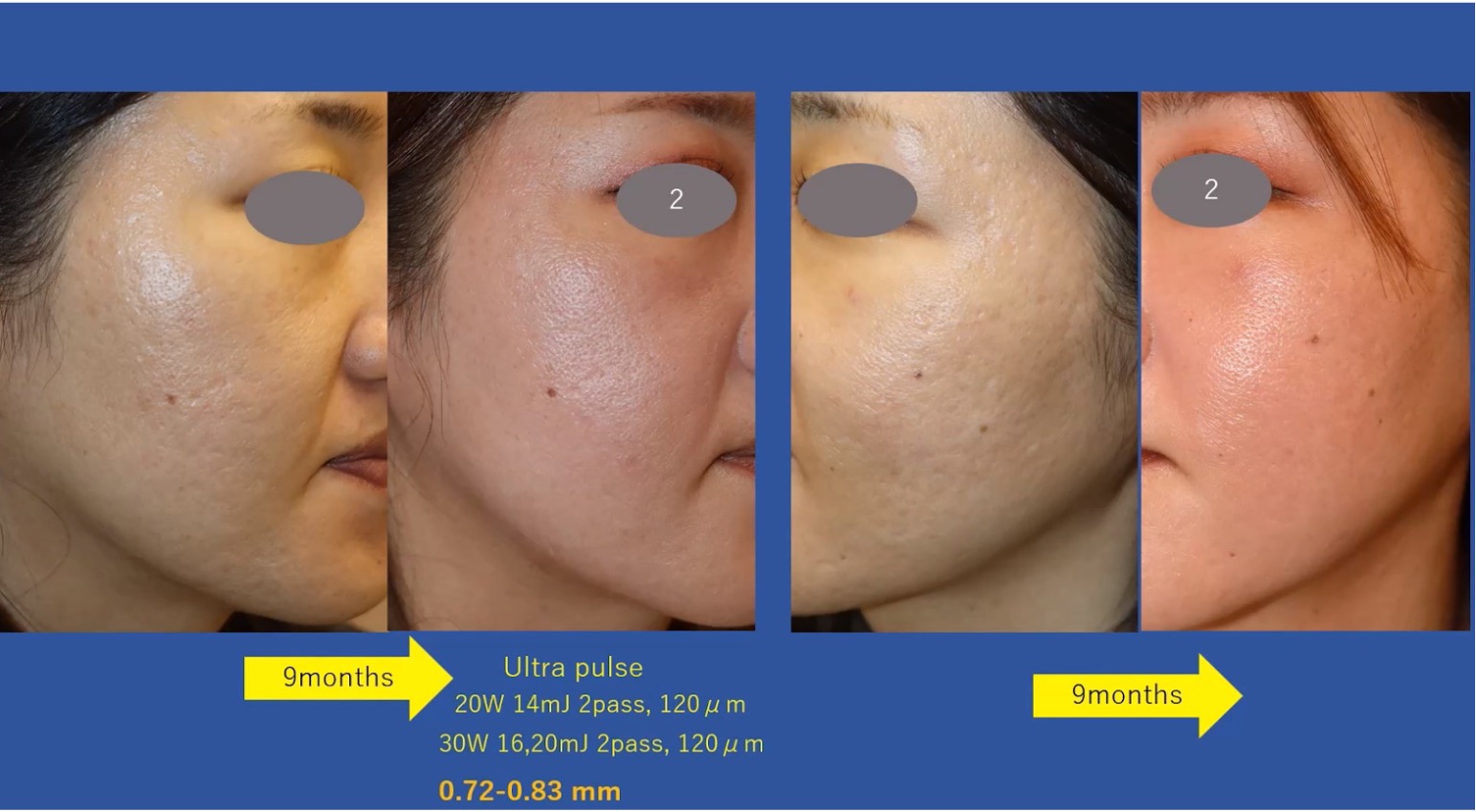
Post-treatment follow-up is key to ensure maximum benefit from the treatment. Thorough UV protection and good moisturizing are advised for several weeks after treatment. Crusting will begin to fall off after one week and take up to two weeks to completely peel off. It is important to explain to the patient that downtime may be longer for deeper irradiation.
Summary
The fractional CO2 laser is a highly effective and safe treatment in aesthetic medicine. It is highly effective in skin rejuvenation and scar treatment, and results in high patient satisfaction. With appropriate parameter setting and follow-up, the treatment can be optimized for each patient.
Another major advantage is that it has fewer adverse effects and faster recovery than conventional laser therapy. This treatment is expected to further evolve and spread in the future. In the field of aesthetic medicine, the development of treatments utilizing fractional CO2 lasers is progressing in order to meet the diverse needs of patients.



